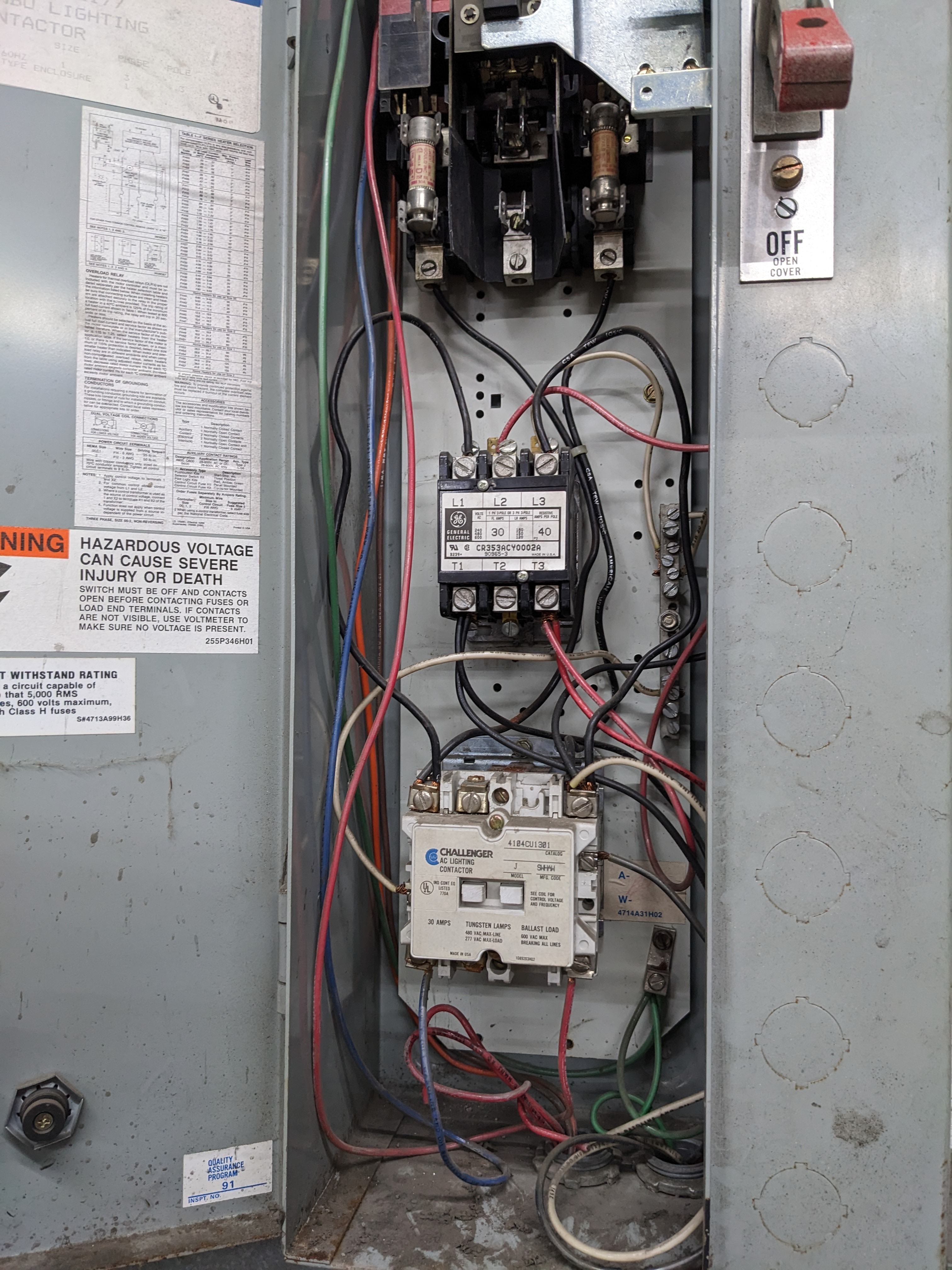Llortus
Member
- Location
- Beaver, PA
- Occupation
- Retired Electrician/Lineman

This is in a friends warehouse, traced all the high bay mercury vapor (white bulb) lights to this contactor.
Someone has been into this system and has wired some LED lights, I'm assuming because they couldn't figure out contactor. I suspect they may of grabbed power from previous control circuit.
Warehouse is single phase 120/240, contactor fed with double pole 20A breaker.
When the contactor was manually activated it tripped the 20A breaker.
I can confirm we had voltage at load side of fuses and bottom blue and red wires feed the lights.
Looking for:
What control scheme do you think this is using?
Do you see wiring issues that don't look right?

